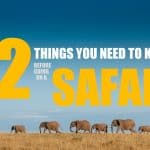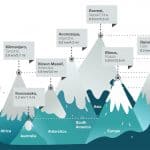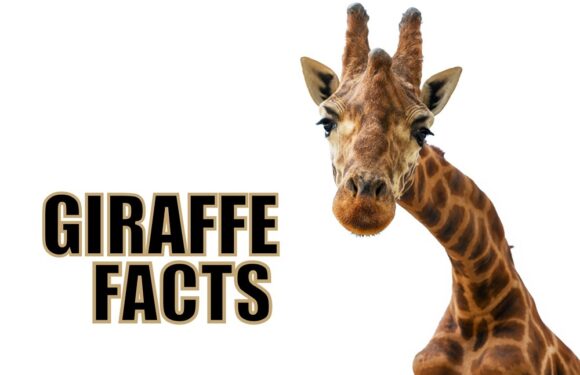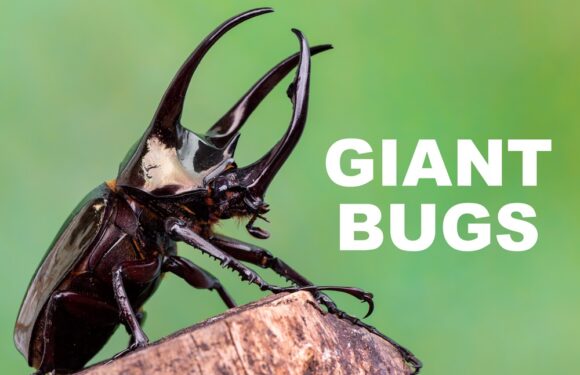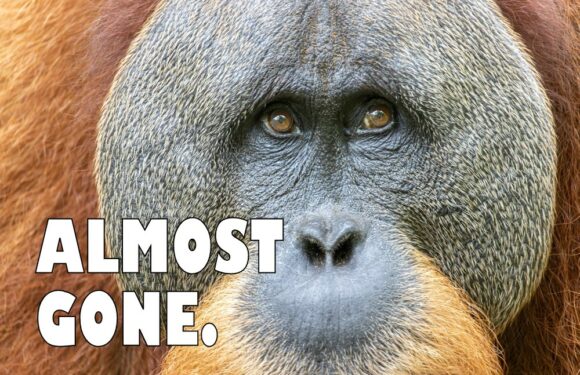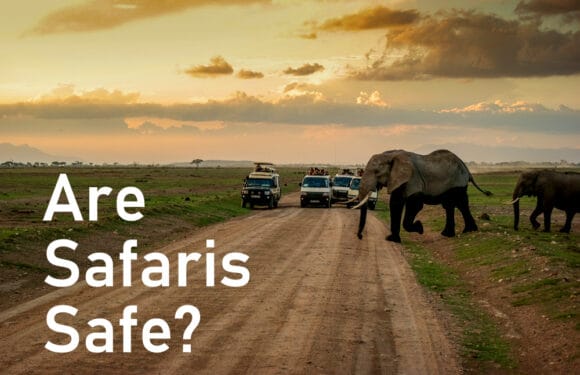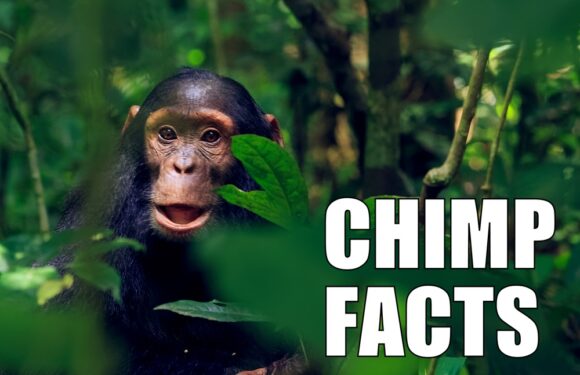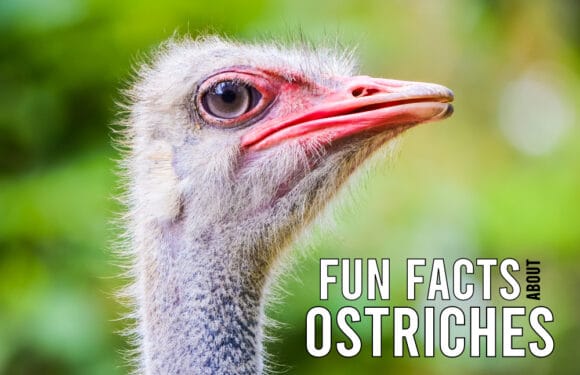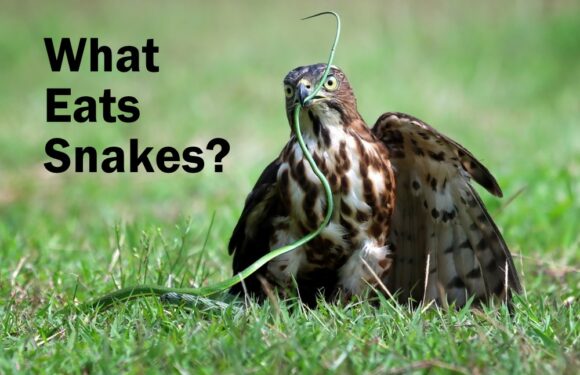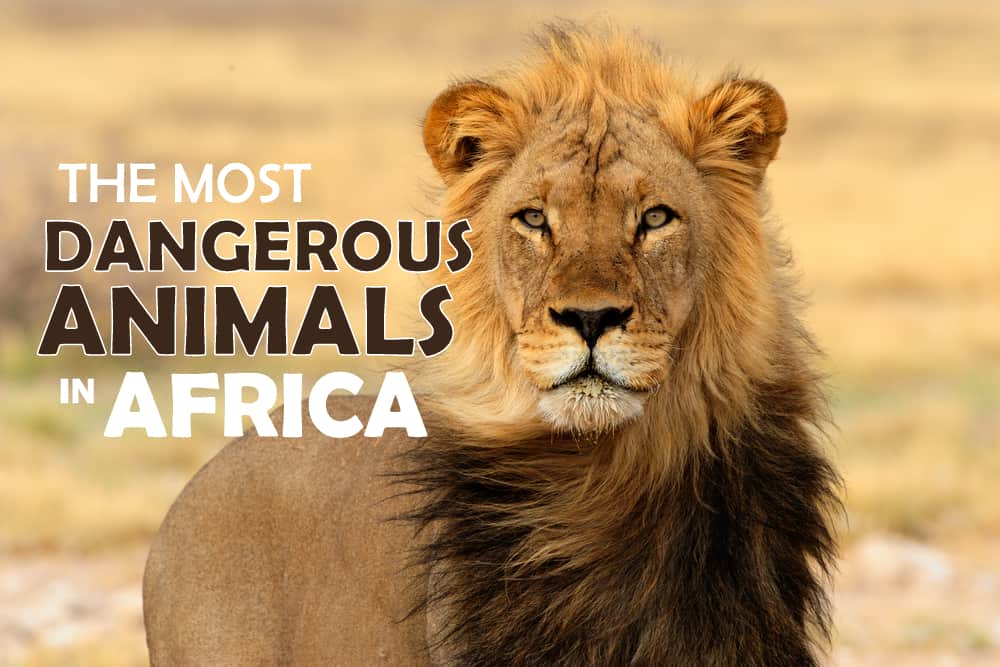
More than 30 million tourists visit Africa every year.
The continent is home to the world’s top destination for safaris. There are few things in the world more exhilarating than observing wild animals in their natural habitats, making a safari a solid bucket list trip for most people.
From East Africa to Southern Africa, there are numerous national parks well worth visiting including the Serengeti in Tanzania, Masai Mara in Kenya, Kruger in South Africa, Chobe in Botswana, Hwange in Zimbabwe, Zambezi in Zambia, and others. But being so close to wild animals, with open windows and no roof, begs the question… which animals pose a risk to our safety?
Let’s look at the most dangerous animals in Africa.
10. Spotted Hyena (number of attacks on humans unknown)
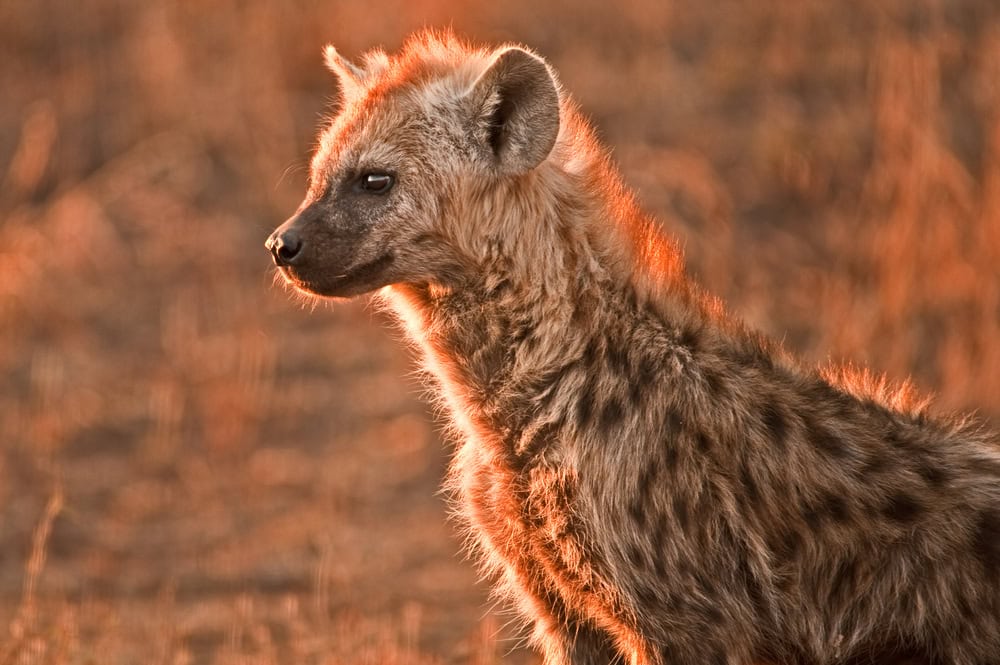
Spotted hyenas are the most common carnivores in Africa. Of the four species of hyenas (spotted, brown, striped, and aardwolf), the spotted hyenas are the largest.
As highly intelligent creatures, they live in social hierarchical units called clans that can number over 100 members. Their cognitive abilities have been compared to those of primates.
Hyenas are extraordinarily adept as both hunters and scavengers. They will opt for the easiest meal that requires the least amount of energy to obtain. That means they steal kills made by other predators such as leopard and cheetah. Their diet is varied, consisting of wildebeest, zebra, antelope, rodents, monkeys, reptiles, birds and even insects.
Hyenas have powerful jaws and teeth. Their bite force is among the highest of the animal kingdom, up to 1,000 pounds of force per square inch. This allows them to tear into flesh and even crush bones, horns, and teeth.
When hyenas hunt an animal that is bigger than themselves, they may hunt in packs. They will try to single out an animal and separate it from the rest of the herd. Hyenas use their great endurance to exhaust their prey. They can cruise at speeds of 37 mph for several miles. Together, the hunting success rate as a clan can be upwards of 75% compared to hunting alone (15% success rate).
The instances of these animals hunting humans are very rare. It is believed that hyenas attack humans when food is scarce or when their prey is seen as easy, such as sleeping humans, the elderly or children.
9. Leopard (26 attacks on humans per year)
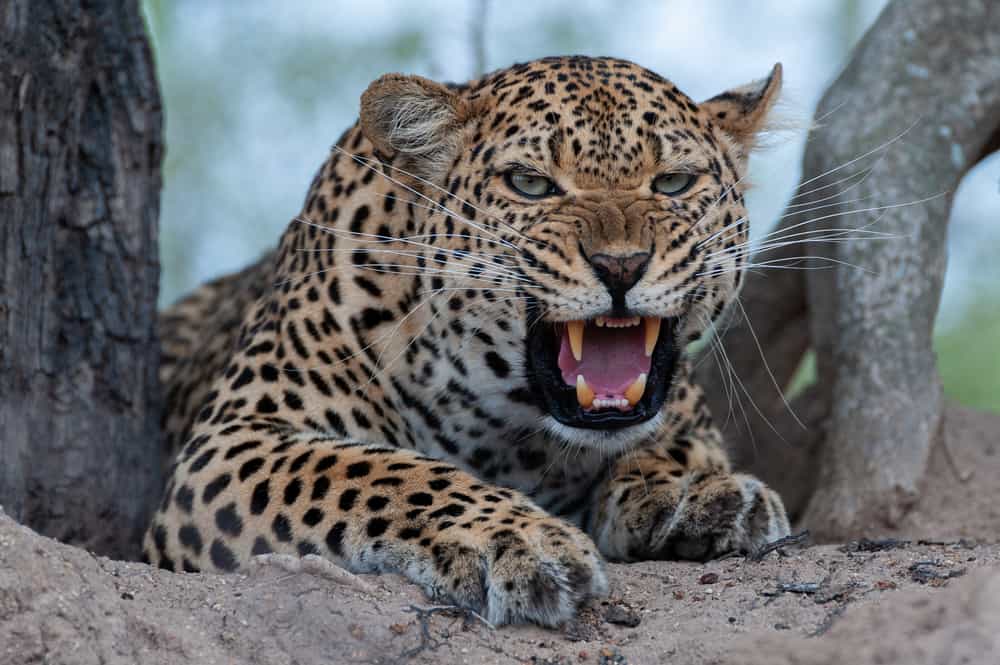
Leopards, with their sleek and powerful physique, embody the epitome of nature’s predators.
These elusive big cats, found in various habitats across Africa and Asia, command both awe and fear. Possessing remarkable agility, stealth, and strength, leopards are formidable hunters, capable of taking down prey much larger than themselves.
Known for their distinctive coat covered in rosettes and spots, leopards have excellent camouflage in their natural habitats. This pattern, along with their ability to move quietly, allows them to approach prey undetected. Their stealthy nature is crucial for successful ambushes.
Leopards are opportunistic carnivores with a wide-ranging diet. They can adapt to various environments and consume different prey, from small mammals to large ungulates. This increases their chances of finding food, especially in areas where the availability of prey species varies. However, this behavior has also led to conflicts with human populations. Leopards venture into inhabited areas in search of easy meals, posing a threat to livestock and, on rare occasions, human lives.
8. Rhinoceros (3 attacks on humans per year)
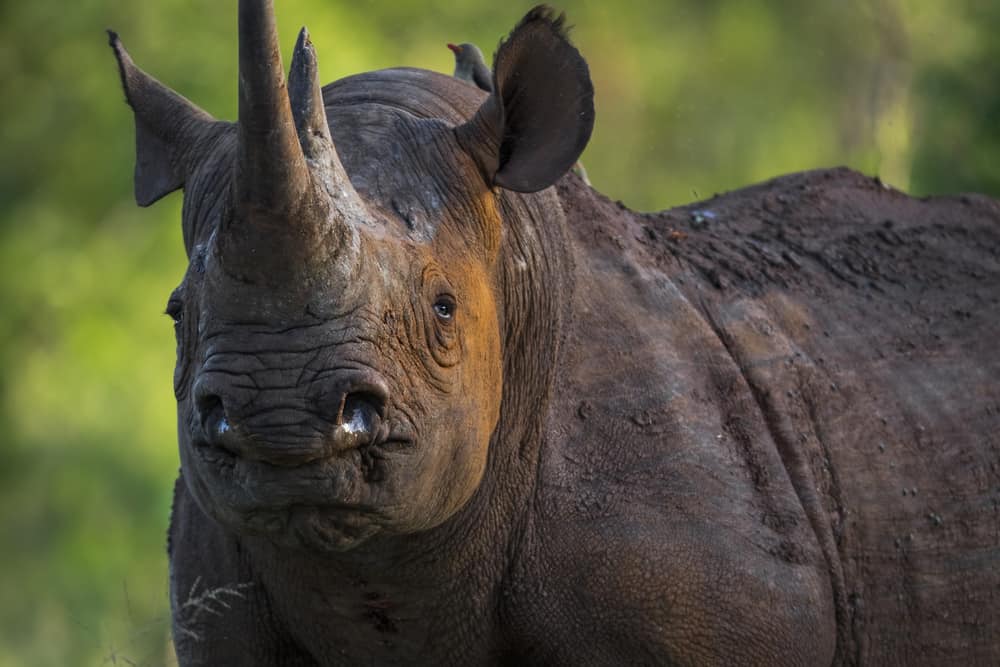
Rhinoceroses, or rhinos, are the second largest land animals on Earth. They are known for having dramatic, sharp horns that emerge from their snouts. In fact, the word rhinoceros is Greek for “nose horn.” Their barrel-like bodies are covered with thick skin that resembles armor.
Rhinos have notoriously poor eyesight; they have one of the worst visions of all animals on the planet. It is said that they can barely distinguish between humans and trees beyond 15 feet. So they rely on their strong sense of smell and hearing to get around.
Attacks by rhinos are rare but they do occur. Each year safari vehicles are charged by angry rhinos who felt challenged or threatened. However, they are generally not aggressive towards humans, and only two or three attacks are reported a year.
Rhinos are solitary animals with bulls associating with females only for mating. Occasionally, a female and her offspring form groups called crashes. Rhinos are herbivores, eating grass, leaves, and fruit.
There are five rhino species alive today which include the white rhinoceros, black rhinoceros, Indian rhinoceros, Javan rhinoceros, and Sumatran rhinoceros. The white rhino and black rhino are the only two that are indigenous in Africa. All species of rhinoceroses are listed as endangered or vulnerable.
7. Lion (100 human deaths per year)
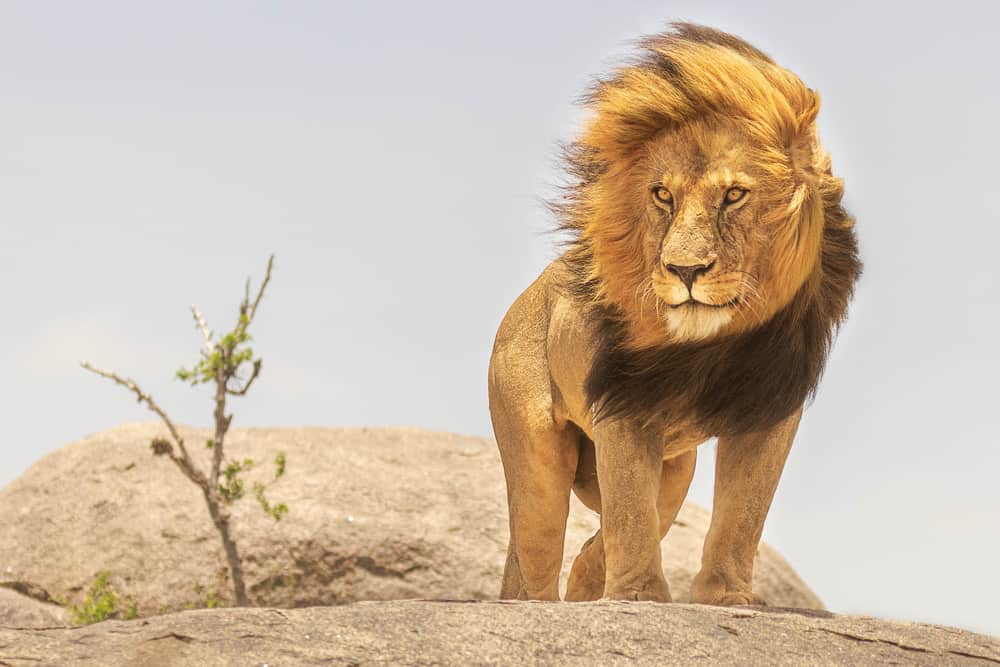
Lions are the apex predator of Africa. They are known to hunt humans, such as the famous “Lions of Tsavo” who killed a staggering 35 to 135 railway workers Kenya in 1896. Estimates for lion-related deaths vary year-to-year, but a 2005 study found that in Tanzania alone, lions killed an average of 22 people per year.
Typically, lions do not view humans as food but rather as a threat. It is believed that sick male lions are mostly responsible for attacking humans for an easy meal. Additionally, lions can hunt humans in areas where their usual food source has become scarce. It is estimated that 100 people are killed by lions every year.
Lions live in groups called prides that consist of adult females, smaller numbers of males, sub-adults, and cubs. When they hunt, they do so cooperatively, with the females doing most of the work. Lions have excellent night vision, estimated to be six times better than human sight.
6. Cape Buffalo (200 human deaths per year)
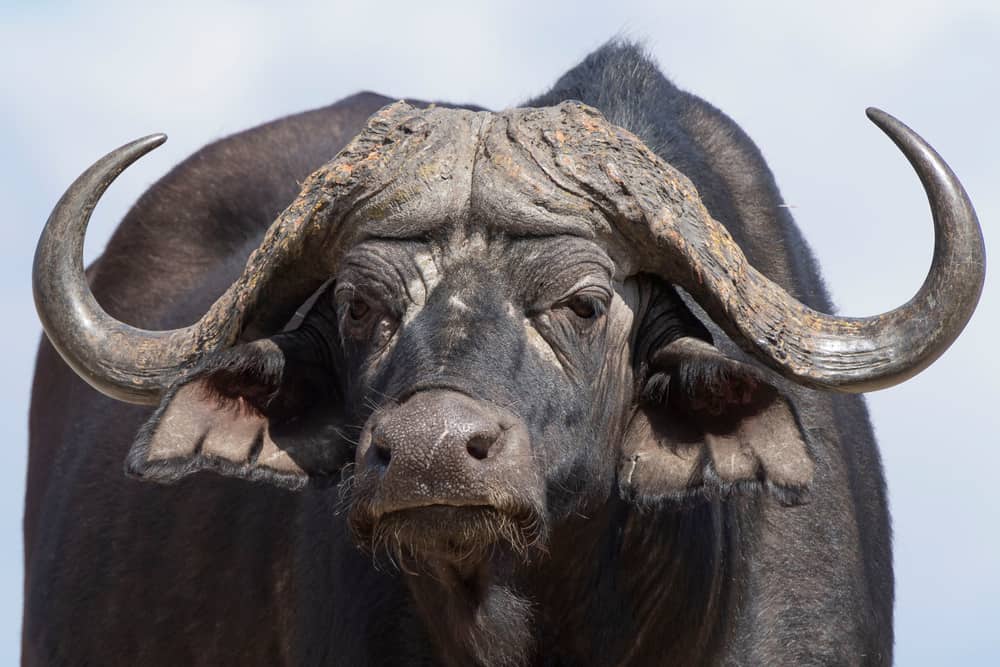
Sometimes referred to as “widowmaker” or “the black death,” the Cape buffalo is one of the most dangerous animals in Africa.
In the past, when hunting the big five animals was prominent, it was known that the buffalo killed more hunters in Africa than any other animal. Today, they reportedly charge thousands of people a year, and kill about 200. They can attack suddenly and unpredictably, causing serious injury with the their huge, curved horns.
Buffalo are gregarious and live in mixed herds often numbering hundreds of individuals. They can weigh up to 2,000 lbs. and stand 6 feet tall at the shoulders.
Full grown individuals are rarely targeted by large predators. Taking down an animal this formidable is extremely perilous, even for a pride of lions. Additionally, herds will stand together creating a wall of horns to ward off an attack.
Cape buffalo are widespread across the savannahs of sub-Saharan Africa, with large populations living in East and Southern Africa.
5. African Elephant (500 human deaths per year)

African elephants are the largest land mammal in the world and the largest of the three elephant species. The adults can grow to 24 feet in length and 13 feet in height and weigh up to 14,000 lbs.
Elephants are active, social animals that live in herds as large as 100 individuals. They are constantly on the move in search of food. As herbivores, they spend between 12 to 18 hours a day eating. The bulk of their diet consists of grass, leaves, bark, fruit, and a variety of foliage.
The trunk is one of its most distinguishing features of elephants. Incredibly, the elephant trunk has up to 40,000 muscles. For comparison, the entire human body has about 600 muscles. This extra long nose is not only flexible enough to gather and handle food but can also collect water. Trunks are used to suck up water, pick up objects, trumpet warnings, and greet one another.
Elephant tusks are actually teeth. They use their tusks to dig holes and strip bark from trees and to fight. Elephants have no real natural predators, mainly due to its sheer size.
Estimates suggest that elephants kill about 500 humans per year. Elephant attacks are common in Africa where they often come into conflict with local farmers. Due to habitat destruction, elephants are being pushed into smaller areas, and frequently raid and destroy farmers’ crops.
4. Hippopotamus (500 human deaths per year)
You would never know it, but the hippo is the most dangerous land animal in Africa. Don’t let their cute and gentle appearance and gentle fool you. Hippos can be extremely territorial and aggressive.
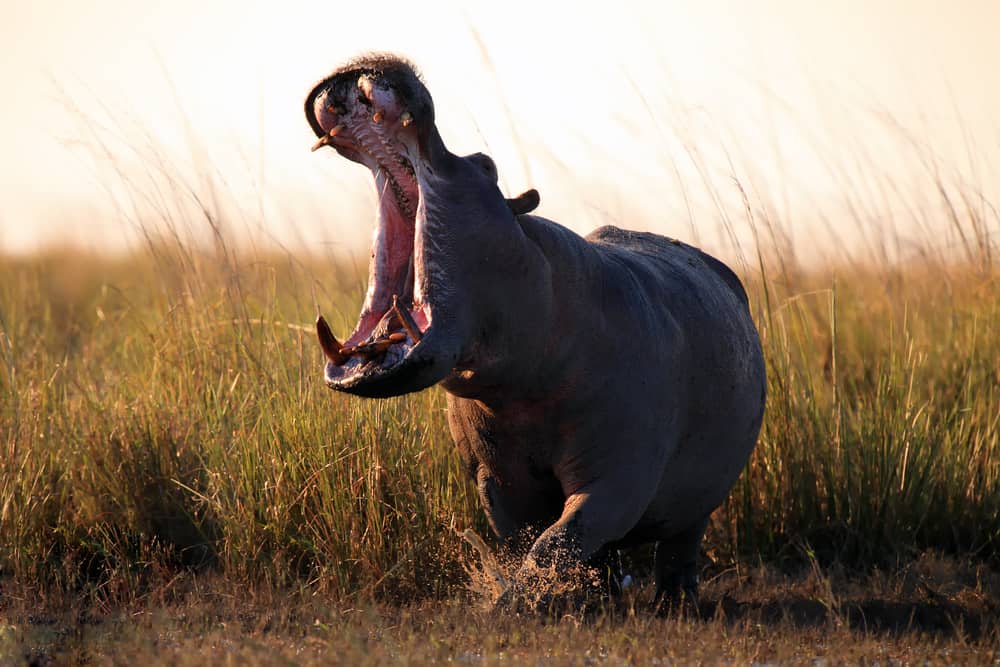
They are the third largest land mammal, behind only elephants and white rhinos. They can grow to 16 feet in length, 5 feet in height at the shoulders, and over 3,300 lbs. in weight. Hippopotamus have long canines that can reach up to 20 inches long. These teeth are used for combat and play no role in feeding.
Hippos live in large herds of up to 100 members. They spend most of the day in the water and come out at dusk to graze, making them nocturnal herbivores. They can consume up to 150 lbs. of grass each night. The word hippopotamus has a Greek origin, meaning “river horse.”
What makes hippos dangerous is their tendency to defend their territories. They are responsible for about 500 human fatalities per year, most of which occur along riverbanks.
3. Nile Crocodile (1,000 human deaths per year)

The Nile crocodile is a highly adapted aquatic predator. It is Africa’s largest freshwater reptile, measuring as long as 20 feet and weighing up to 1,650 pounds.
The word crocodile is derived from the Greek word krokodeilos which literally means “pebble worm.” Kroko is Greek for pebble while deilos means worm or man. The name is a reference to the rough skin of the crocodiles.
Crocodiles are ambush predators that wait for prey to come within range. They can hold their breath for up to two hours as they lie-in-wait near the shoreline. When unsuspecting prey comes too close, they spring forward using their teeth and tremendous bite force to grab their victims. They can easily subdue and eat large mammals, including antelope, buffalo, and large cats. Their diets, however, consist mainly of fish.
Attacks on humans occur in places where humans rely on the waterways for every aspect of life. Sources estimate that 300 to 1,000 people a year are killed by crocodiles.
On safari, you may see Nile crocodiles basking in the sun with an open mouth. This behavior is a way for the crocodile to release the heat from its body.
2. Snake (138,000 human deaths per year)
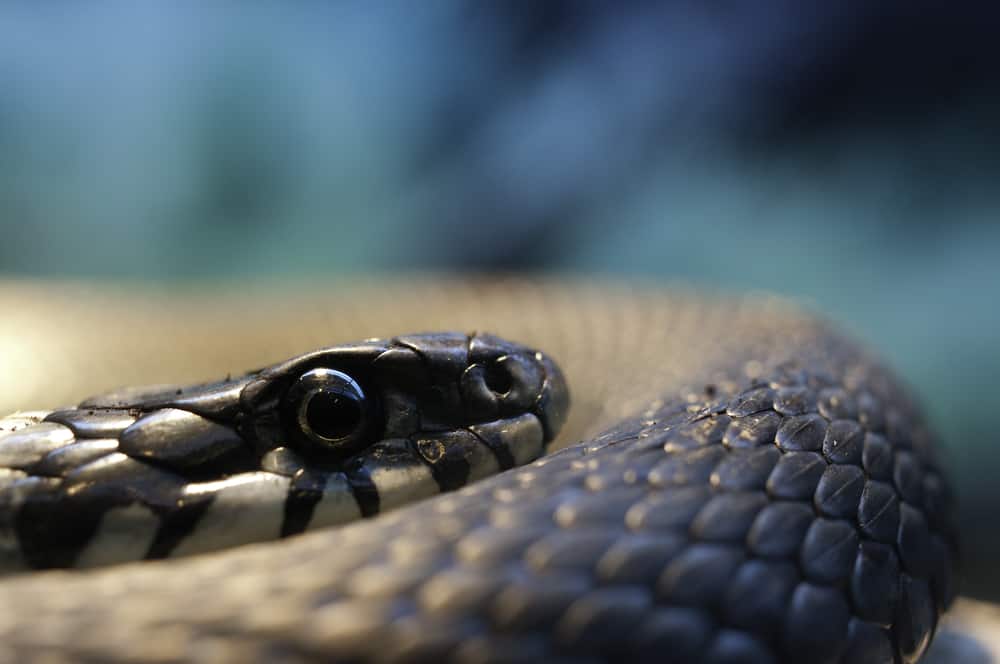
Of the 3,500 species of snakes in the world, nearly 500 live in Africa. Dozens of these are dangerous, including the black mamba, spitting cobra, and puff adder.
Worldwide, there are about 5.4 million snake bites each year, resulting in 1.8 to 2.7 million cases of envenomings (poisoning from snake bites). Venomous snake bites can cause serious medical emergencies such as paralysis, bleeding disorders, organ failure, and tissue destruction. The estimated number of fatalities from snake bites ranges from 81,000 to 138,000 per year.
In Africa, the black mamba is most deadly snake species. It is the largest venomous reptile in the country, growing up to 14 feet in length. Its venom is extremely toxic. In fact, the amount of venom in a single bite from a black mamba can kill 10 men.
Another dangerous snake found in Africa is the Puff Adder. This snake causes more fatalities than any other snake in the continent due to its wide habitat, spanning from Sub-Saharan Africa to the Arabian peninsula. Puff adders are solitary and nocturnal creatures that rely on camouflage for protection. Most bites occur when people accidentally step on them.
It is extremely rare for tourists to encounter any snakes in Africa. The majority of snakebites and deaths occur in rural areas, where access to health care services is limited.
1. Mosquito (1,000,000 human deaths per year)

The mosquito is the deadliest animal in the world (insects are indeed animals, part of the group of animals known as arthropods). They cause between 700,000 to 1,000,000 human deaths per year.
It’s not the creature itself that causes death, but the spectrum of potentially fatal diseases that they carry. These include Malaria, Yellow Fever, Zika virus, Dengue Fever, and West Nile Virus. It’s estimated that mosquitos account for 17% of the estimated global burden of infectious diseases!
Mosquitos find their target primarily by detecting carbon dioxide on our skin. When they bite, they transfer viruses, bacteria, parasites, and more to humans. Malaria, a disease caused by a plasmodium parasite, is the most deadly of the mosquito borne diseases. Symptoms include high fevers, shaking chills, and flu-like illness. Left untreated, it may cause severe complications and death.
The best way to avoid mosquito transmitted diseases is to prevent mosquito bites. Since mosquitos are most active around dawn and dusk, avoid going out during these times. Cover up exposed skin as much as possible and use insect repellents containing DEET.
__________



